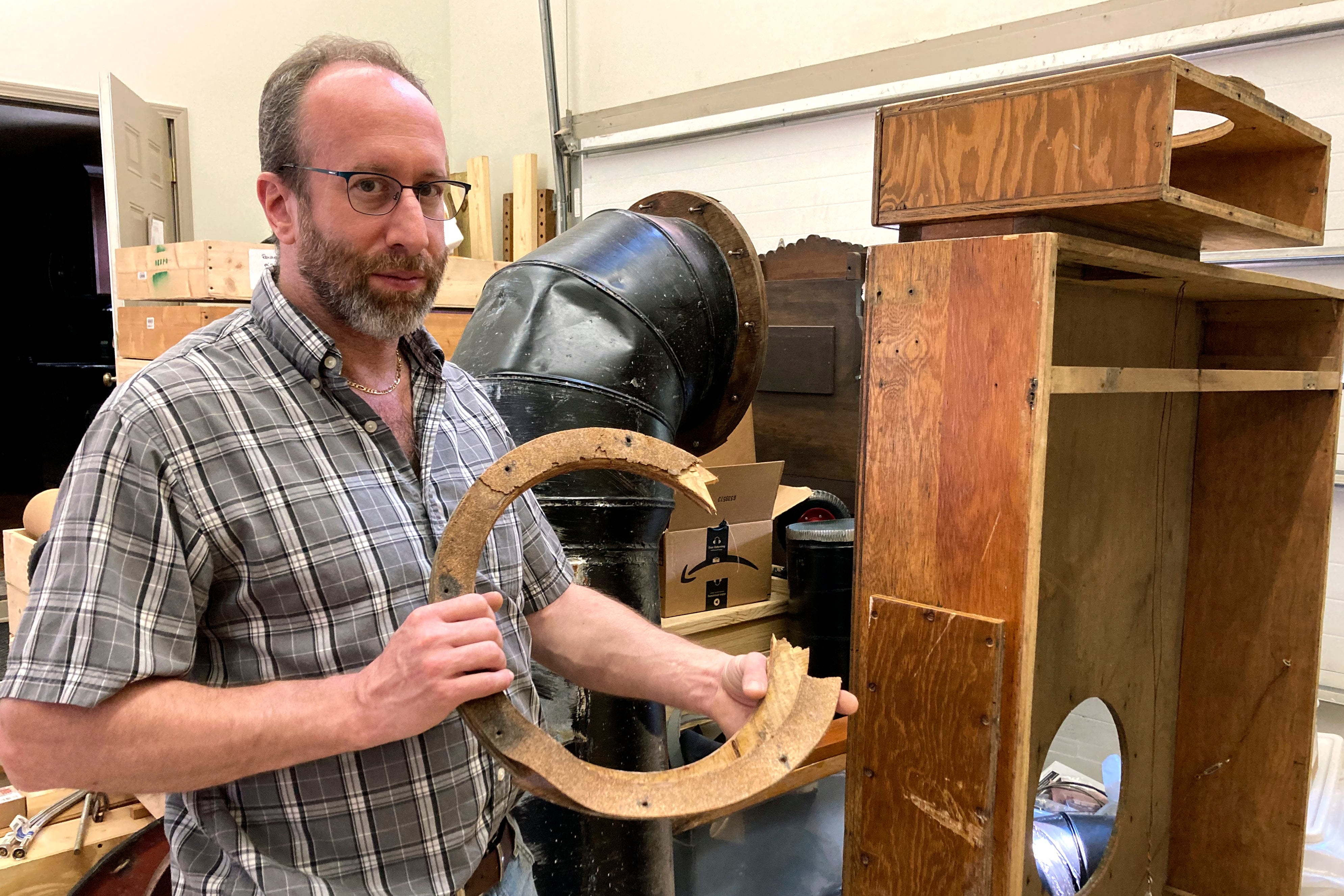Organ experts try to get the music going again after flood
A summer flood in southeastern Michigan ruined basements in thousands of homes

David Hufford learned that an extreme storm had flooded a suburban Detroit church with more than 7 feet of water, striking the boiler, electrical system, elevator and more.
“Just astounding,” he said, thumbing through photos on his phone.
But this repairman wasn't called to fix anything ordinary at St. Paul Evangelical Lutheran in Grosse Pointe Farms. Hufford's mission: get the music flowing again from the church's 63-year-old pipe organ.
A flash flood in southeastern Michigan ruined basements in thousands of homes when a regional pump system didn't keep up with the June 25-26 disaster. It also created urgent business for a small band of experts who specialize in pipe organs, a cherished instrument of worship in churches.
“You might think that the pipe organ that sits high in the loft would be spared,” said the Rev. Tim Pelc of St. Ambrose Catholic Church in Grosse Pointe Park, “but the blower system, which supplies air to the bellows, is located in the basement.”
The system at St. Ambrose was "wiped out" by water, Pelc reported in the church bulletin, and won't be restored for weeks. A piano now leads the hymns.
Indeed, other churches in the Detroit area had similar challenges. Meanwhile, the nearly century-old Senate Theater in Detroit, home of a Mighty Wurlitzer organ, is recovering after several feet of water flooded the basement.
Hufford, whose business, Renaissance Pipe Organ in Ann Arbor services the instrument, explained that a blower and other intricate parts commonly installed in lower levels serve as the “lungs of the organ.”
As he made his rounds at St. Paul, Hufford found that the organ's wind reservoir, a critical box made of wood, had been completely soaked.
“It's going to the dump, it's done. There is no way to salvage it," he said. “But we'll keep it around and use it for a pattern.”
The blower motor might only need to be rebuilt, a cheaper option than a full replacement, said Eric Miller, St. Paul’s music director. The cost to fix the organ was estimated at $12,000.
“I'm hoping to have it back by Thanksgiving,” he said.
“It's a real specialized area of work,” Miller added. “Once you find somebody who’s good, you want to stick with them. They know the instrument, the peculiarities of it.”
Renaissance Pipe Organ was able to get the wind reservoir running again at Peace Lutheran Church in Detroit, a result that was celebrated by the church with a brief Facebook video of a rising bellow.
Another organ technician, Stephen Warner, was needed at two Detroit churches, Zion Evangelical Lutheran and St. Matthew’s-St. Joseph’s Episcopal. He said emergency calls aren't typical.
“It's very seasonal,” said Warner, who also is the organist and music director at Jefferson Avenue Presbyterian Church. “Approaching Christmas and Easter, it's mostly spent tuning and troubleshooting. The pitch of organ pipes can change with the temperature.”
Warner understands why organs are revered, especially in churches.
“The pipes themselves are singing. You have a sense of majesty," he said. “The sound of the organ seems like it came from a long time ago, and it’s going to be here after we’re gone. It can go from an absolute roar to a whisper — and everything in between.”
___
Follow Ed White at http://twitter.com/edwritez